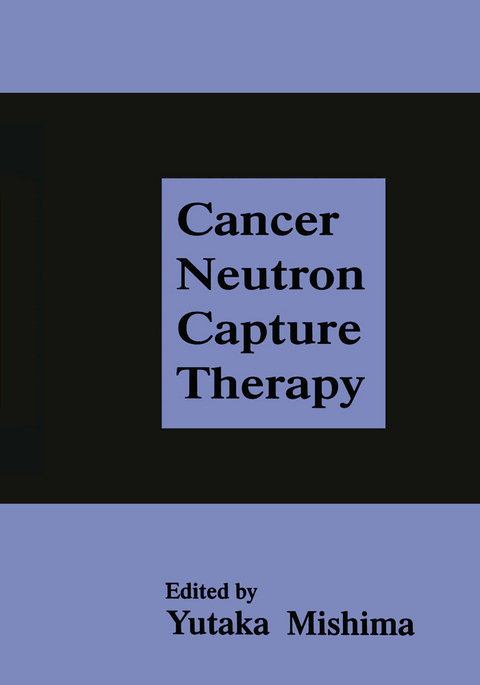
Cancer Neutron Capture Therapy
Springer-Verlag New York Inc.
978-1-4757-9569-1 (ISBN)
There are many human cancers which actively synthesize specific characteristic proteins such as melanomas, thyroid cancer and squamous cell carcinoma. Many cancer researchers have of course tried to utilize this specific activity as a key for the selective treatment of cancers. In the past for example, the molecular hybrid compound of DOPA, a substrate of melanin, and nitrogen mustard N-oxide hydrochloride, a ctyotoxic anti-tumor drug, was synthesized as Melphalan and used to treat malignant melanoma. A major problem arose though in that it was soon found to be highly suppressive toward bone marrow and quite toxic while not being remarkably effective. Thus, malignant melanoma could not be cured by it. Such failure led us to develop a novel bimodal therapeutic system which includes the use of non-toxic potentially cytocidal chemicals which selectively accumulate within the cancer cells and which are converted by a controllable modality into an actively cytocidal element in situ. We can now non-surgically cure malignant melanoma and glioblastoma with our selective cancer treatment, neutron capture therapy (NCT); as can be found in this volume. Included are 124 papers on the latest breaking developments discussed at the Sixth International Symposium on NCT for Cancer held in Kobe during the late autumn of 1994.
Selective Thermal Neutron Capture Therapy of Cancer Cells Using Their Specific Metabolic Activities-Melanoma as Prototype (Y. Mishima). Recent Results with Liposomes as Boron Delivery Vehicles for Boron Neutron Capture Therapy (M.F. Hawthorne et al.). Preparation of Epidermal Growth Factor Conjugates Aimed for Boron Neutron Capture Therapy (L. Gedda et al.). Epidermal Growth Factor (EGF) as a Potential Targeting Agent for Delivery of Boron to Malignant Gliomas (J. Capala et al.). Boron Neutron Capture Therapy against Tumor Cells with Overexpression of the EGFreceptor (J. Carlsson et al.). Boronrich Oligophosphates: Novel Molecules for Use in BNCT (R.R. Kane et al.). Potential Use of Bispecific Antibodies (BSABS) for Targeting Gliomas and Melanomas (L. Liu et al.). Effect of Intratumoral Injection of 10Bimmunoliposome on BNCT for Growth Inhibition of Human Pancreatic Cancer Grafts in Nude Mice (H. Yanagie et al.). Chemical Modeling with pboronphenylalanine for Boron Accumulation to and Release from Melanoma (K. Yoshino et al.). Chemical Properties of p, m, oboronophenylalanine (K. Yoshino et al.). An Efficient Synthesis of pboronphenylalanine and Its Homologues by the Reaction of Ethyl Isocyanoacetate with a pformylbenzeneboronic Acid Derivative (M. Kirihata et al.). 115 additional articles. Index.
| Zusatzinfo | XXVII, 920 p. |
|---|---|
| Verlagsort | New York, NY |
| Sprache | englisch |
| Maße | 178 x 254 mm |
| Themenwelt | Medizin / Pharmazie ► Medizinische Fachgebiete ► Dermatologie |
| Medizin / Pharmazie ► Medizinische Fachgebiete ► Onkologie | |
| Medizinische Fachgebiete ► Radiologie / Bildgebende Verfahren ► Nuklearmedizin | |
| Medizinische Fachgebiete ► Radiologie / Bildgebende Verfahren ► Sonographie / Echokardiographie | |
| Naturwissenschaften ► Physik / Astronomie ► Angewandte Physik | |
| Naturwissenschaften ► Physik / Astronomie ► Atom- / Kern- / Molekularphysik | |
| ISBN-10 | 1-4757-9569-6 / 1475795696 |
| ISBN-13 | 978-1-4757-9569-1 / 9781475795691 |
| Zustand | Neuware |
| Haben Sie eine Frage zum Produkt? |
aus dem Bereich


